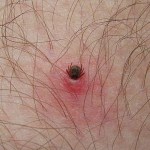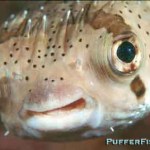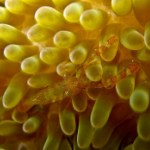toxin
I mentioned yesterday that this week is Naturopathic Medicine Week 2014, or, as I like to call it, Quackery Week. At the time, I wasn’t sure when or if I was going to do another post about the quackery that is naturopathy this week. I was going to play it by ear and see what came up. Then, one of my commenters mentioned this subreddit, Read what naturopaths say to one another. Conclusion: manipulative, poorly trained, and a threat to public health. Now, I’m not a big fan of Reddit, largely because I can’t figure out how to find things easily, and I hate the sheer ugly and user hostile…
Image of a tick stealing a meal from: www2.outdoorchannel.com
Ticks are blood-sucking arthropods that can act as vectors for various diseases in both animals and humans. A recent article published in Frontiers in Zoology summarizes findings that suggest ticks may also be considered venomous ectoparasites. For example, Ixodes holocyclus is a species of Australian tick whose saliva can induce paralysis in humans and animals. According to the new article, about 8% of known tick species can induce paralysis. Ornithodoros savignyi ticks even secrete a lethal…
Image from www.pufferfish.net
It should be noted that the theory of dolphins getting "high" off puffer fish is highly controversial as others have mentioned that tetrodotoxin, the neurotoxin released from puffer fish, is famous for causing paralysis making it more of a poison as opposed to a good time. It is reportedly more potent than cyanide. In fact, a study published in 1990 reported tetrodotoxin as the cause of death of two Atlantic dolphins found dead in a lagoon (Hokama et al., J Clin Lab Anim. 1990).
So what exactly are those dolphins doing with the puffer fish in the BBC…
A new documentary from BBC called "Spy in the Pod" has captured what they claim to be footage of dolphins using puffer fish to reportedly "get high". According to a quote from the Daily Mail, "Zoologist and series producer Rob Pilley said that it was the first time dolphins had been filmed behaving this way." The toxins apparently have a narcotic-like effect on the dolphins.
The "Spy in the Pod" two-part series begins tonight at 8:00pm on BBC1.
Additional source:
Daily Mail
Caribbean sun anemone. Image from Wikimedia, Omar Spence Photography.
Dr. George Chandy at the University of California, Irvine discovered a toxin in Caribbean sun anemones (see photo) in 1984 and has spent his career studying the toxin. Prior work by his team suggested that a synthetic version of a peptide (ShK-186) from the toxin may help treat autoimmune disease. It works by blocking a specific potassium channel (Kv1.3) important in immune system reactivity. Since potassium channels are also important in the regulation of metabolism and body weight, his team wanted to explore…
"Toad licking" has been well documented around the world with secretions from many species causing intense hallucinations. In this 2006 NPR podcast, they tell the story of a poor cocker spaniel who became addicted to toad. "We noticed Lady (the cocker) spending an awful lot of time down by the pond in our backyard. Late one night after I'd put the dogs out, Lady wouldn't come in. She finally staggered over to me from the cattails. She looked up at me, leaned her head over and opened her mouth like she was going to throw up, and out plopped this disgusting toad." Increasingly Lady would return…
Humans are now one large step closer to producing armies of undead, zombie hordes who live only to feast on the brains of the living and reproduce by infecting non-zombies with their "zombie virus" through their saliva or other bodily fluids. This is thanks to the work of a team of scientists at Ben-Gurion University of the Negev in Israel, who have documented a kind of wasp that zombifies cockroaches.
Ampulex compressa enjoys licking pieces of wood, long walks on the beach and necromancy.
The Ampulex compressa actually stings a roach twice, once to disable it, and again (this time…


